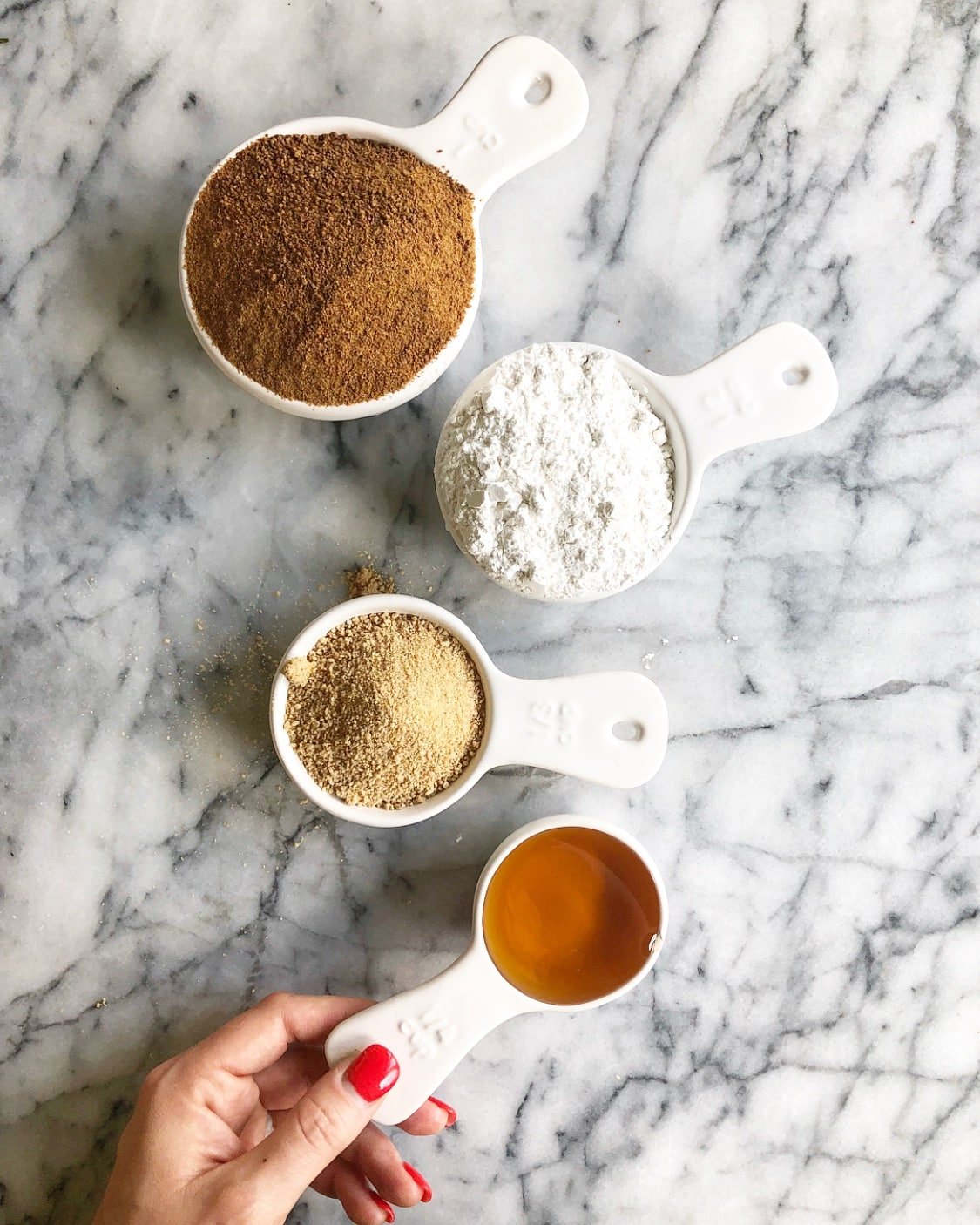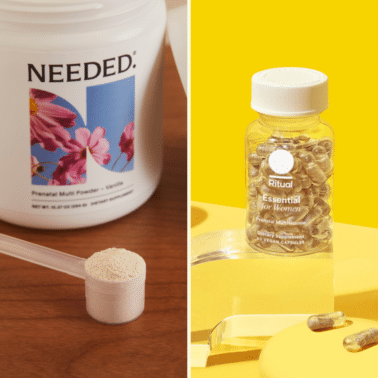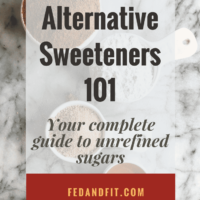Today’s post is all about clearing up sugar confusion! We will be breaking down how sugar affects the body, the different types of sugars on the market, and how to determine which sugars are right for YOU.
“Hey there! Amber here again with another weekly installment for the Fed & Fit Project blog, where we chat all about mindset, nutrition, and fitness!”
Whether you’re well into the Paleo lifestyle or just starting to dip your toe into healthier eating, you’ve undoubtedly heard a lot about sugar, and all that conflicting information may have your head spinning. You may be curious which sweetener is the best option for you, or maybe you just want to be able to partake in the occasional treat without fear of re-awakening your inner “sugar demon,” or perhaps you just aren’t sure what impact sugar is having on your body. Today we will break it all down, to help you with clearing up sugar confusion, and for even more info you can grab your Alternative Sweeteners 101 Guide here!
How Sugar Intake Affects the Body
First, let’s go through what exactly happens to the body when sugar is consumed, as an important step in clearing up sugar confusion. Most natural and processed sweeteners are roughly half glucose and half fructose. While the body can make immediate use of glucose for energy, fructose must first be converted to blood glucose (if still needed), glycogen (up to a point), and fat for storage. Triglycerides are a byproduct of the conversion of excess glucose and all fructose into glycogen or fat.
Once sugar is consumed, the pancreas is signaled and produces insulin, which helps shuttle the glucose into cells where it is either stored or used immediately for energy. Sometimes, your body over-responds to large sugar intake, sensing emergency, and then your blood sugar drops too low, leading you to feel tired, cranky, shaky, and hungry. So, you reach for another sweet snack to replenish that energy and the cycle repeats itself. Over time, your cells can become desensitized to insulin, no longer responding when it needs to bring glucose into the cell, leading to insulin resistance.
While this all sounds like potentially scary stuff, the real key to preventing this cycle is to avoid consuming too much sugar, too often, and determining which type of sugar works best for YOU. Does that give a little insight into clearing up sugar confusion?
Artificial Sweeteners, Processed Sugars, and Natural Sweeteners
Now that we’ve discussed the impact of sugar on the body, let’s start clearing up sugar confusion around the different sweeteners that we consume.
Artificial Sweeteners
When they first began to hit the market years ago, artificial sweeteners seemed like a no-brainer. What’s not to love about all the sweetness without the associated sugar and calories? It appeared that these could be a great solution to sugar, but we later found out that man-made, zero-calorie artificial sweeteners are highly processed and contain chemicals that can be poisonous to the human body. The most common artificial sweeteners include saccharin, acesulfame (Sweet One), aspartame (often found in diet sodas), neotame (NutraSweet), and sucralose (Splenda).
Artificial sweeteners are up to hundreds of times sweeter than natural sugars and can often create even more sugar cravings and addiction. In addition, artificial sweeteners may contribute to weight gain1, even though they are calorie-free. The sweetness of these products can still trigger the same insulin response2 that we talked about earlier, but in this case the body has nowhere to take the anticipated glucose, furthering the insulin resistance cycle.
In addition, artificial sweeteners have been shown to contribute to digestive problems, migraines, cancer(3, 4, 5), metabolic syndrome, and even cardiovascular disease6. Given all of this information, we highly recommend avoiding artificial sweeteners whenever possible.
Sugar Alcohols
Sugar alcohols are another commonly used low-calorie sugar substitute derived from natural sources. Common sugar alcohols include:
- Xylitol
- Erythritol
- Sorbitol
- Malitol
- Isomalt
Sugar alcohols occur naturally in some fruits and are lower in calories and sugar because you only actually absorb 50-80% of them, the rest is indigestible. Once consumed, they are then absorbed from the small intestine into the blood where they are converted to energy by processes that require little or no insulin. Some of the sugar alcohol is not absorbed into the blood, and instead is passed through the small intestine where it is fermented by bacteria in the large intestine. You may have heard that sugar alcohols are notorious for causing digestive distress, and this is why. During this fermentation process, water is pulled from the intestines and can cause diarrhea, bloating, and abdominal pain, so you will need to be careful testing your personal tolerance to sugar alcohols.
Also, as discussed in the case of artificial sweeteners, the body still releases insulin in anticipation of glucose after tasting something sweet. While sugar alcohols do have some absorbable sugar, the majority don’t need insulin in order to be used by the body, leading to possible insulin resistance and continued sugar cravings.
While sugar alcohols have been studied and found to be mainly safe6, I still recommend avoiding them due to the potential of digestive distress, and because I believe that sugar is better consumed in its natural form, with the calories and glucose that the body is expecting. Knowing exactly what sugar alcohol is and how it affects us is an important step in clearing up sugar confusion.
Natural Sweeteners
Sweeteners in this category range from plain granulated, white sugar to honey and maple syrup. To be honest, many natural sweeteners such as honey or coconut sugar have the same nutritional impact on the body as white sugar, but are less processed and have more limited availability, making them better choices than artificial sweeteners. Natural sweetener options include the following:
- Coconut Nectar and Sugar
- Honey
- Pure Maple Syrup
- Dates and Date Syrup
- Yacon Syrup
- Cane Sugar
- Stevia
- Monk Fruit
For more information on the nuances of these sugars, click HERE to download our Alternative Sweeteners 101 eBook!
Determining the Right Type and Amount of Sugar for YOU
The key to clearing up sugar confusion, consuming sugar and maintaining health is to limit the amount of sugar you are eating. Just because pure maple syrup is a natural, less-refined sugar doesn’t mean you should be eating it in unlimited quantities! A single serving of white sugar (for example, in a reasonably sized grain-free cookie) will likely pose a much more minor threat to health, whereas several servings (three or more) can trigger a blood sugar imbalance.
When it comes to the type of sugar that’s best for you, I’d recommend trying a few of the natural options and seeing how they affect you. If you’re interested in sugar alcohols, you can give those a try as well and observe for any digestive impacts!
When you test different sweeteners, or even just adding more sweets in general into your diet, I recommend asking yourself the following 3 questions:
- Did consuming sugar make you feel hyper or jittery?
- Did you experience a crash after eating sugar that may make you feel tired, shaky, or irritable?
- If you eat one serving of sugar, do you find yourself craving sugars more and more, even if you are using a zero calorie sweetener like stevia or monk fruit?
If you answered yes to any of the above questions, you may need to reduce the amount of sugar you are consuming, change the type of sugar you are consuming, or make sure you are consuming sugar with a good amount of added fat and protein, for example: these Trail Mix Cookies vs. a handful of gummy bears! If one serving of sugar is still spiking your sugar cravings, you may need to continue to reduce your sugar intake for while.
Even if you are still struggling with the affects of sugar, it is important to note that it is still okay to indulge when you feel like it is worth it. Sometimes, when it’s your Grandma’s famous apple pie, the cake at your daughter’s wedding, or even just the cookie that you’ve been craving and can’t get out of your head, being able to eat those foods and participate in a shared tradition instead of feeling deprived and left out is worth the trade-off.
I hope this helped you to start clearing up sugar confusion! For a deeper dive into these topics, you can check out the Fed & Fit Book .















Scientific evidence, including human clinical trials, has shown that beverages containing low- and zero-calorie sweeteners can be a useful tool as part of an overall weight management plan. Low-calorie sweeteners have been proven safe by worldwide government safety authorities as well as hundreds of scientific studies. With respect to aspartame specifically, it’s important to point out that regulatory authorities in more than 100 countries verify this ingredient’s safety. Moreover, the European Food Safety Authority conducted an in-depth review affirming aspartame’s safety, and ruled out the adverse effects alleged here: https://bit.ly/2msDJyy